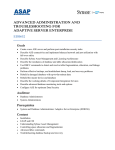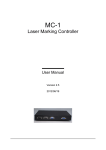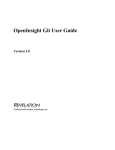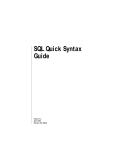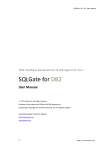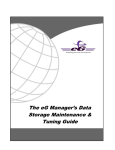Download TROUBLESHOOTING ADAPTIVE SERVER DATA STRUCTURES
Transcript
TROUBLESHOOTING ADAPTIVE SERVER DATA STRUCTURES EDB557 Goals Understand the inner workings of Adaptive Server data structures Use dbcc to discover potential data corruption problems Identify and resolve different types of data corruption Understand how transactions are logged and troubleshoot full logs Read and understand the contents of the transaction log Use Recovery Fault Isolation (RFI) Audience Database Administrators who are responsible for the troubleshooting and repair of Adaptive Servers. System Administrators who are responsible for the maintenance of Adaptive Server storage and internal structures. Performance and Tuning Specialists who have system and/or database administration responsibility in managing Adaptive Server environments Prerequisites Completion of Fast Track to Adaptive Server Enterprise (EDB115) Completion of System and Database Administration: Adaptive Server Enterprise (EDB356) Completion of Advanced Administration and Troubleshooting for Adaptive Server Enterprise (EDB652) Highly recommended - Completion of Performance and Tuning: Configuring Adaptive Server Enterprise (EDB553) Minimum 6 months of DBA experience with Adaptive Server Enterprise Content Page Management structures: Allocation pages, OAM pages, GAM Pages In-depth understanding of many dbcc commands and their usage Details of physical storage, DBINFO, DBTABLE Data, Index, Control and Text/Image page layout for APL and DOL tables, page linkage, disk init, and dsync APL and DOL Index structures Page and extent allocation / deallocation Logging; how to read log pages in detail Recovery internals Recovery Fault Isolation, bypass recovery Notes Designed for customers responsible for gaining expert level skills in maintaining optimal environment performance levels, server availability, and advanced management. Moving beyond the topics covered in the Advanced Administration and Troubleshooting courses, this course addresses in great detail the inner workings of ASE versions 12.5 thru 15.0.3 for experienced, highly technical DBA's.


